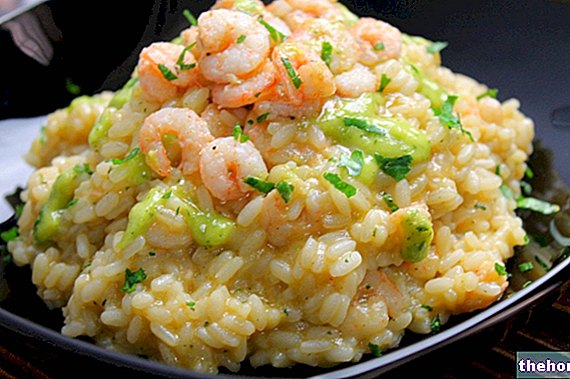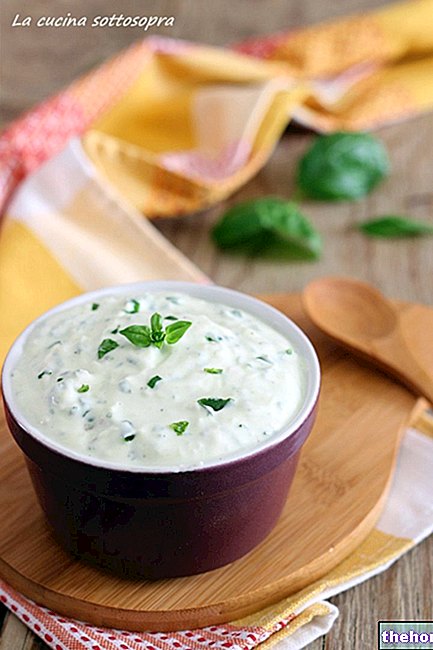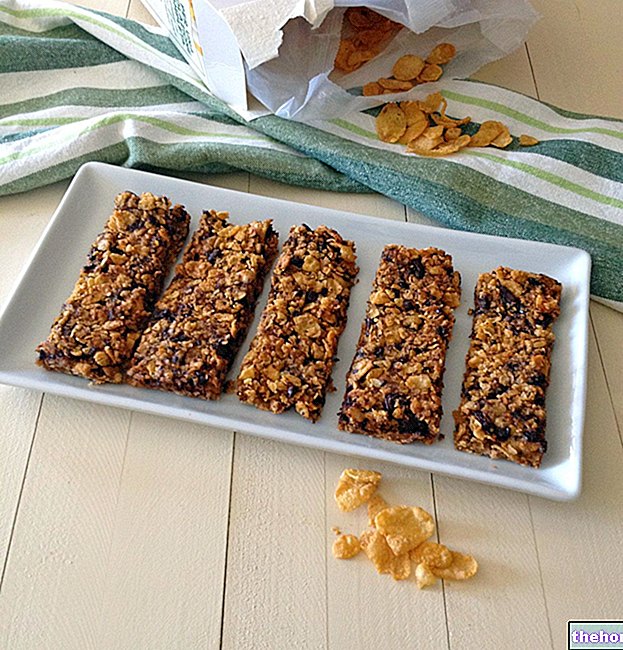Today we are going to put under the magnifying glass a very special food, particularly loved by vegetarians: the wheat muscle, also known as vegetable meat. At first glance, the wheat muscle looks like a nice piece of meat: the texture, the shape and even the flavor is very close, for example, to a delicate roast chicken! In reality, however, the wheat muscle is made entirely with vegetable ingredients.
What is wheat muscle?
It is a vegetable food that derives from the processing of pure wheat gluten with any legume flour (lentil flour, lupine flour, pea flour, chickpea flour, soy flour, etc.). The legume flour softens the dough and makes the final product softer and not at all chewy. To make the wheat muscle tastier, aromas and spices are added directly to the dough. The dough obtained is then trapped in an elastic net (or in a sterile gauze) and boiled in a flavored broth.
Wheat muscle lends itself to a thousand culinary preparations: it can be sautéed, eaten fried, added to salads, browned together with other flavors, smoothed to prepare meatballs or sliced to fill sandwiches.
Muscle of wheat and seitan: differences
Unlike seitan, wheat muscle does not require laborious processing: the dough obtained is in fact immediately ready to be boiled. Otherwise, the seitan requires the (indispensable) step of washing the dough: remember that the starting raw material of the seitan is a strong flour (eg Manitoba flour), which must be mixed for a long time with water to facilitate the formation of gluten. At a later stage, the obtained dough is subjected to washing cycles to remove "everything that is not gluten", ie starch and other water-soluble substances. What remains is a gluten concentrate.
Another point against the seitan compared to the wheat muscle is the waste of water: while to prepare the seitan about 15-18 liters of water are needed (for the washing phase), the wheat muscle does not require waste of " water.
Wheat muscle is a nutritionally more complete product than seitan due to the presence of legumes and cereals: in fact, the amino acids deficient in cereal flour (gluten) are supplied by that of legume and vice versa. In other words, the deficiencies of the different flours are mutually compensated (mutual integration): wheat is in fact poor in lysine, while legumes are deficient in methionine and cysteine (sulfur amino acids).
Nutritional Analysis of Wheat Muscle
Wheat muscle is suitable for the diet of vegetarians, vegans and all those who wish to reduce the intake of animal proteins in their diet. Furthermore, this food is also suitable for those who follow a high-protein diet (because the gluten that composes it is a protein concentrate) and a low-calorie diet (because the wheat muscle is low in calories and fat).
As far as the protein profile is concerned, the wheat muscle provides proteins of high biological value because the protein deficiencies of the flours used (cereals and legumes) are mutually compensated.
Unlike the animal counterpart (i.e. meat), wheat muscle does not contain cholesterol and provides very little saturated fat. In the lipid profile instead polyunsaturated fatty acids emerge, including linoleic acid (precursor of omega-six). When prepared with soy flour, wheat muscle also provides another important essential fatty acid (alpha linoleic), precursor of omega -three.
Wheat muscle: contraindications and disadvantages
Being prepared with pure gluten, wheat muscle is included in the black list of foods for celiacs: people affected by this serious permanent intolerance to gluten cannot in fact afford to eat vegetable meat.
When prepared with soy flour, wheat muscle cannot be taken by those allergic to soy protein.
Video of the Recipe
Problems with playing the video? Reload the video from youtube.
Identity Card of the Recipe
- 196 KCal Calories per serving
-
Ingrediants
For the wheat muscle
- 200 g of wheat gluten
- q.s. of pepper
- 1 teaspoon of tomato paste
- 1 teaspoon of turmeric
- 1 grated nutmeg
- 1 teaspoon of sweet paprika
- 1 teaspoon of curry
- 300-310 ml of water
- 100 g of pea flour
For the aromatic vegetable broth
- 1 stick of celery
- 100 g of carrots
- 2 tablespoons of soy sauce
- 20 g of salt
- 2 L of water
- 1 teaspoon of tomato paste
To brush
- 1 tablespoon of extra virgin olive oil
Materials Needed
- Large bowl
- Latex gloves
- Wooden spoon
- Small bowl
- Broth casserole with lid
- Elastic food net or sterile gauze
- High-walled cylinder or glass
- Food brush
- Food cutting board
Preparation
- First, prepare the flavored vegetable broth, which will be used to cook the wheat muscle. In a saucepan, pour the water, salt, clean vegetables (carrot and celery) and herbs to taste (soy sauce, tomato paste). Those who wish can enrich the broth with kombu seaweed, rich in very useful mineral salts. . Bring to the boil.
- Meanwhile, prepare the wheat muscle. In a bowl, pour the wheat gluten and pea flour. Mix the powders well with a wooden ladle.
Did you know that
You can choose any legume flour (soy, chickpeas, broad beans, peas, lupins, etc.). According to some sources, it seems that the creator of the wheat muscle, Mr. Enzo Marascio, prepared this food for the first time by mixing wheat gluten and lentil flour.
Even if the precise quantity of legume flour used is not known, it is advisable to respect the following proportion: 1 part of legume flour and 2 parts of gluten flour.- Enrich the flours with flavorings to taste. We recommend: sweet paprika, curry, turmeric, nutmeg and pepper. Those who want a more colorful dough can dissolve a teaspoon of tomato paste in a little water and add it to the flours. Salt must not be added at this stage: the wheat muscle will in fact be flavored in the cooking liquid.
- Once all the dry ingredients are mixed, you can slowly hydrate with water. Using the pea flour in the suggested doses, it will be necessary to add 300-310 ml of liquid.
- The dough must be soft, but it must not flake or stick to the hands: the consistency is reminiscent of that of bread and pizza.
- At this point, the dough should be left to rest for 15 minutes to allow the gluten to act.
- When the dough is ready, you can proceed with shaping: we will obtain a sort of roll. Brush a high-sided cylindrical container (glass or beaker) with a tablespoon of oil. Insert the elastic food net into the cylinder and gently slide the dough into the container. Invert the cylinder and slowly adhere the net along the entire roll. Cut the ends of the net. The roll is ready to be boiled.
- Dip the wheat muscle into the broth and simmer for 40 minutes. After that, turn off the heat and allow the wheat muscle in the cooking broth to cool completely.
- Remove the wheat muscle from the aromatic broth and, with scissors, gently remove the mesh, taking care not to damage the aesthetics of the vegetable roll.
- Cut the roll into slices and store in a container, dipping the wheat muscle in its cooking liquid.
The right idea
I recommend browning the wheat muscle with a drizzle of oil and serving it sliced as an accompaniment to crispy baked potatoes.Alice's comment - PersonalCooker
And this is the result. Does it look like a real meat roast or not? And I assure you that the taste is great too. I proposed it to you with potatoes, but if you like, you can also cut it into pieces and cook it with tomato sauce: you will get an exquisite stew. The wheat muscle, just like seitan, lends itself to a thousand preparations: you have to just ignite your imagination to get new dishes every day!Nutritional values and Health Comment on the recipe
Homemade Wheat Muscle - Meat for Vegetarians is a vegan dish rich in proteins. NB. The peptide biological value of individual foods is low or medium, but thanks to the reciprocal compensation of limiting amino acids, Homemade Wheat Muscle has a high overall biological value. Carbohydrates are present and significant while fats are low in quantity.
The intake of dietary fiber from Homemade Wheat Muscle, although not mentioned in the table, is certainly more than satisfactory; moreover, although the detail on the lipid profile of the food is not available, it is conceivable that in addition to the absence of cholesterol, a low percentage of saturated fats can be appreciated. This makes Homemade Wheat Muscle a recommended food also in the diet of hypercholesterolemic.
The average portion of Homemade Wheat Muscle is around 100-150g (200-300kcal).
NB. Obviously, Homemade Wheat Muscle - Meat for Vegetarians - is STRONGLY NOT RECOMMENDED in case of celiac disease.




























